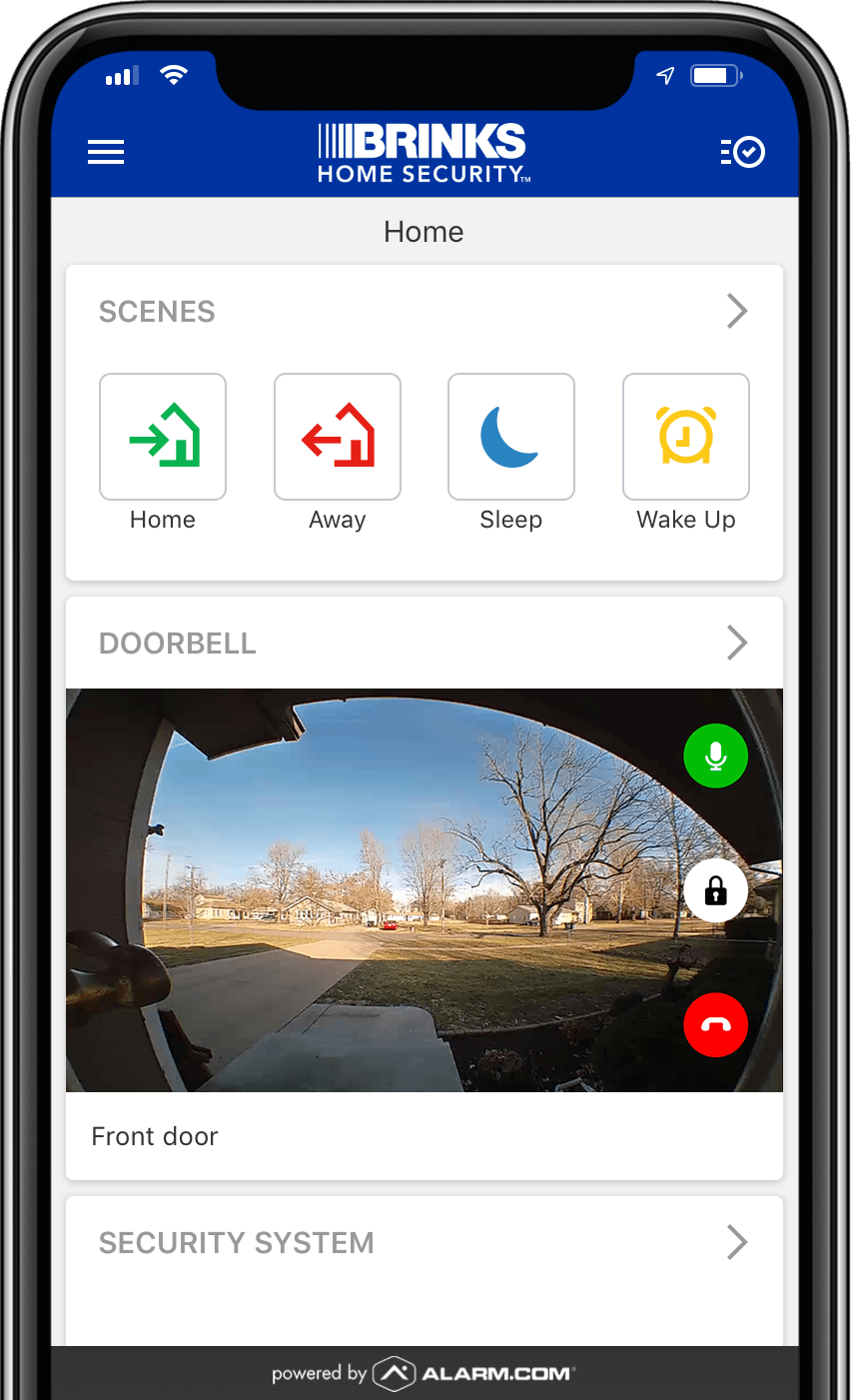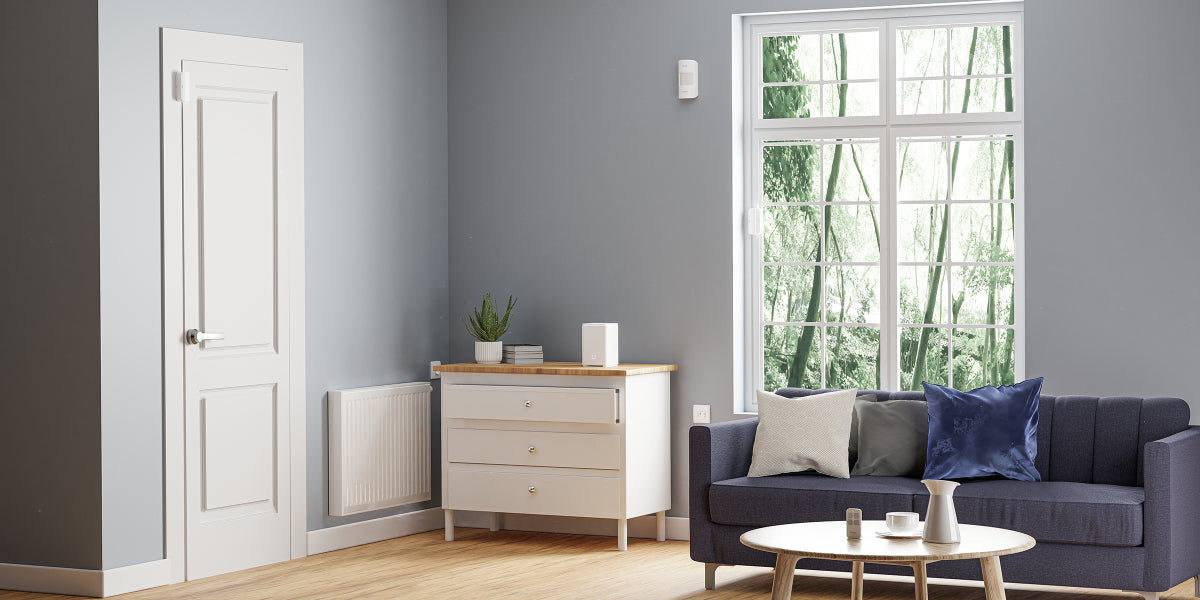
Cove gives you the efficiency and cost-effectiveness of traditional security systems, but for a fraction. It offers 100% cellular communication, 24 hour backup battery, smash and grab protection, and 100% cellular connectivity. InstaText will notify you via email if there is an emergency. Depending on your plan you may be able use voice commands or Alexa for control.
Only way to control the system is via Cove's hub
The Cove System is controlled by a touch screen panel located on the Cove Base Station. This is the central control point for the Cove System. It can be used to adjust volume or arm the system. You can also view and modify personal settings. Add sensors. The battery backup can also be used to power the system for as long as 24 hours.
The Cove can work with Google Assistant and Amazon Alexa. It can be controlled by voice commands. However it lacks the same functionality as other smart products. It can be used to maintain basic security and is compatible with third-party equipment.
Plans include Alexa Voice Control and Google Home Voice Control
Cove Security System offers voice control integration with Alexa or Google Home voice assistants. This allows you to control your system using Alexa and Google Home. Or, you could set up a hostage password that will alert your monitoring center if someone attempts to disable the system. Both systems can be used with Amazon Echo products, and they will also integrate with Google Assistant or Alexa.

Cove security systems come in both pre-configured kits and built-yourself options. A basic Cove security system begins with a base unit that has a touch-screen panel of 7 inches. This device costs $184. The Cove system is simple to install and use.
InstaText is used to notify emergency contacts
Cove security systems can send texts to emergency contacts you select in the event of a security crisis. They can respond to an emergency and, if necessary, dismiss the alarm. The system also allows you to provide a password so emergency responders can reach you directly. If you do not wish to provide a password, you can easily add the emergency contacts when you set up the Cove system.
Cove's emergency response system has been certified UL-listed and TMA five diamond certified, with two hot redundant locations. Cove's security monitor system supports two-way Voice. The Cove team will text you back to ask for assistance if the security system cannot reach the customer. Within 30 seconds of your response, Cove team members will send emergency help to you home.
Prices
Cove is a home security system that offers the same effectiveness of a traditional system at a fraction of the cost. It features 100% cellular communications, a backup battery and smash-and–grab protection. If anyone attempts to break into your home or steal your valuables, Cove will send an alert to the monitoring team.
Cove's base protection system is free. However for the first 36-months, you will have to pay monitoring. You will need to pay upfront for any additional monitoring. A Cove basic security system is the best option. The basic system includes door and motion sensors, as well as an indoor cam. You can upgrade to more sophisticated security equipment in the future.

Customer service
Cove Security offers a 60-day risk-free trial for their home security systems. If you're not completely satisfied with your security system, you can return it within the timeframe for a full refund. The company will also pay for shipping costs. This is far more generous than security companies who offer a 30-day refund guarantee.
Cove customer service representatives are available 24 hours a day via email and phone. Chat with customer support representatives online between 10:00 am and 6:00 pm Eastern Standard Time. The company offers online tutorials that will help you install your Cove security systems.
FAQ
Which home security company is best?
ADT is the top home security monitoring service provider. They provide 24/7 monitoring at an affordable cost. They offer 24/7 monitoring service and respond in minutes.
ADT also has an app for iOS and Android. So you can check on your home any time, anywhere.
How do I decide between the different types of home security system?
It is important to consider the threat level in your locality. You might consider installing an alarm system that sounds when someone enters your house. You may not need as much security if you live in rural areas with few burglaries.
Consider whether you are prepared to pay more for advanced features. Some systems include cameras built in, while others do not. Some systems let you remotely monitor your house, while others require you being physically present to view the footage.
What is the easiest method to install a home security alarm?
Home security systems that don’t require any installation are the best. These systems are known as "plug and play", and they work like magic. Just plug them into the power outlets and connect to the internet via a router wireless. Once connected, everything will be available for you to manage from anywhere around the world.
Which home surveillance camera system is best?
A home security system with cameras can help protect your family against intruders. These systems are simple to set up and can provide many benefits to both renters and homeowners. They allow you to monitor your home remotely from any smartphone, tablet, laptop, or other mobile device.
Which home alarm system features are the best?
The Ring Video Doorbell Pro has the most features out of all thehome security systems we reviewed. It allows you to see who's at your front door, speak with them on your phone and record videos. You can also save recordings to the cloud with this free service.
Which is better: home security cameras or home security systems?
Home security systems are better than home security camera because they can detect movement and sounds even if nobody is in the room. However, home security cameras can be mounted on doors and windows easily and are less expensive than home systems.
Alarm monitoring: How much should I spend?
Alarm monitoring costs vary depending on how often you want it monitored, what kind of equipment you need, and whether you are looking at an all-inclusive package or just one monthly fee.
Statistics
- Most home security companies will charge you around 75% of the remaining term of your contract if you cancel early—and some require 100%.Related questionsWhat type of contract length can I expect from security providers?Home security system cancellation (safewise.com)
- Cove sets you free without punishing penalties and fees, unlike other security solutions that charge 75% to 100% of your remaining contract. (safewise.com)
- That's probably why Cove has a whopping 98%* customer retention rate. (safewise.com)
- (In my experience, the discount on my home insurance covered about 25 percent of the subscription of an average plan, but your mileage may vary depending on your location and the size of your home.) (theverge.com)
External Links
How To
How to Install A Home Security System
A home security system is a device that monitors your property and alerts you if there's any activity. It could include a motion sensor or doorbell camera, smoke detectors, flood alarms, carbon monoxide detectors, burglar alarms, and flood alarms. A home security system typically includes one or more sensors, such as motion detectors. These sensors send signals when they sense movement or sound. The signals are then sent out to a control board where they can monitored and recorded. If something goes wrong, like someone breaking in to your house, the control panels sends an alert to your phone or tablet, your computer, or voice assistant. You will be notified immediately and you can take immediate action.
Selecting the right sensors for your home is an important step in installing a home security alarm system. There are two main types. Active and passive sensors. Passive sensors don’t require batteries. They only pick up sounds, vibrations and other signals from their environment. These include buzzers, sirens and doorbells. Active sensors use electricity for data transmission. Examples of such sensors include cameras and motion sensor.
There are many sensors brands today. Each brand comes with its own pros and cons. Some sensors can withstand extreme weather conditions, while others cannot. Some sensors have built-in speakers, so they can be heard even when you're not outside. Others only work inside. Some of these are very basic, while others have advanced features such night vision.
Once you have chosen the right type of sensor for your property, it is time to select a manufacturer. This will ensure that all your sensors work together. There should be many options at your local hardware store.
Once you have decided on a brand to use, it is time to decide on how many you want. Depending upon whether they live alone or in a group, most people begin with one or two sensors. You might want to buy more sensors if you intend on adding them later.
Next, determine where you want your sensors to be placed. Are you looking for them to be near doors or windows? Or would you rather have them hidden? Before placing them around your property, you should get permission. Also, make sure they won't interfere with anything else, like electrical outlets.
Now that you know where you want to put your sensors, you'll need a way to connect them to your control panel. You may need a power adapter, or battery pack depending on the setup. Once everything is setup, you will be able to monitor your property.